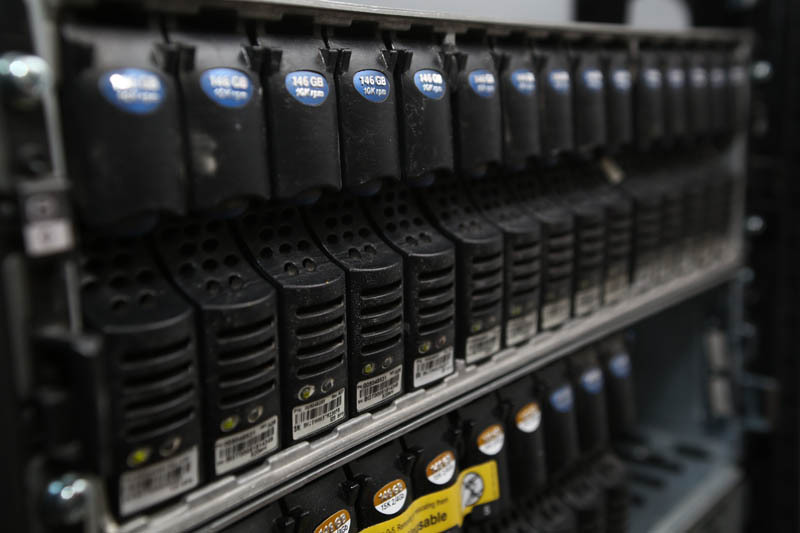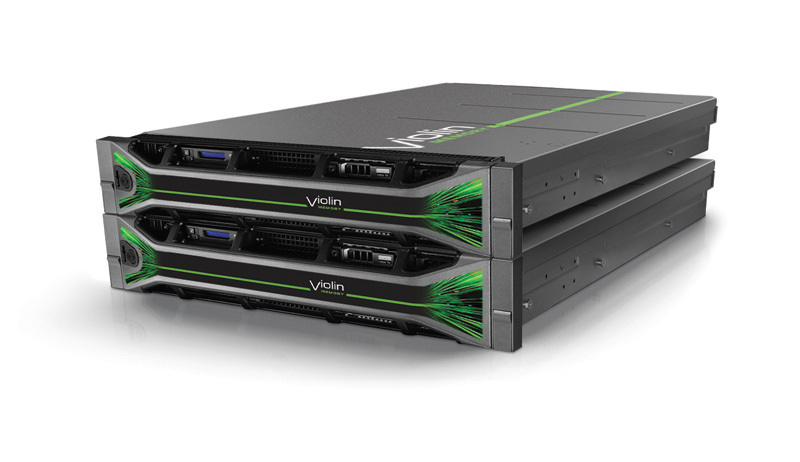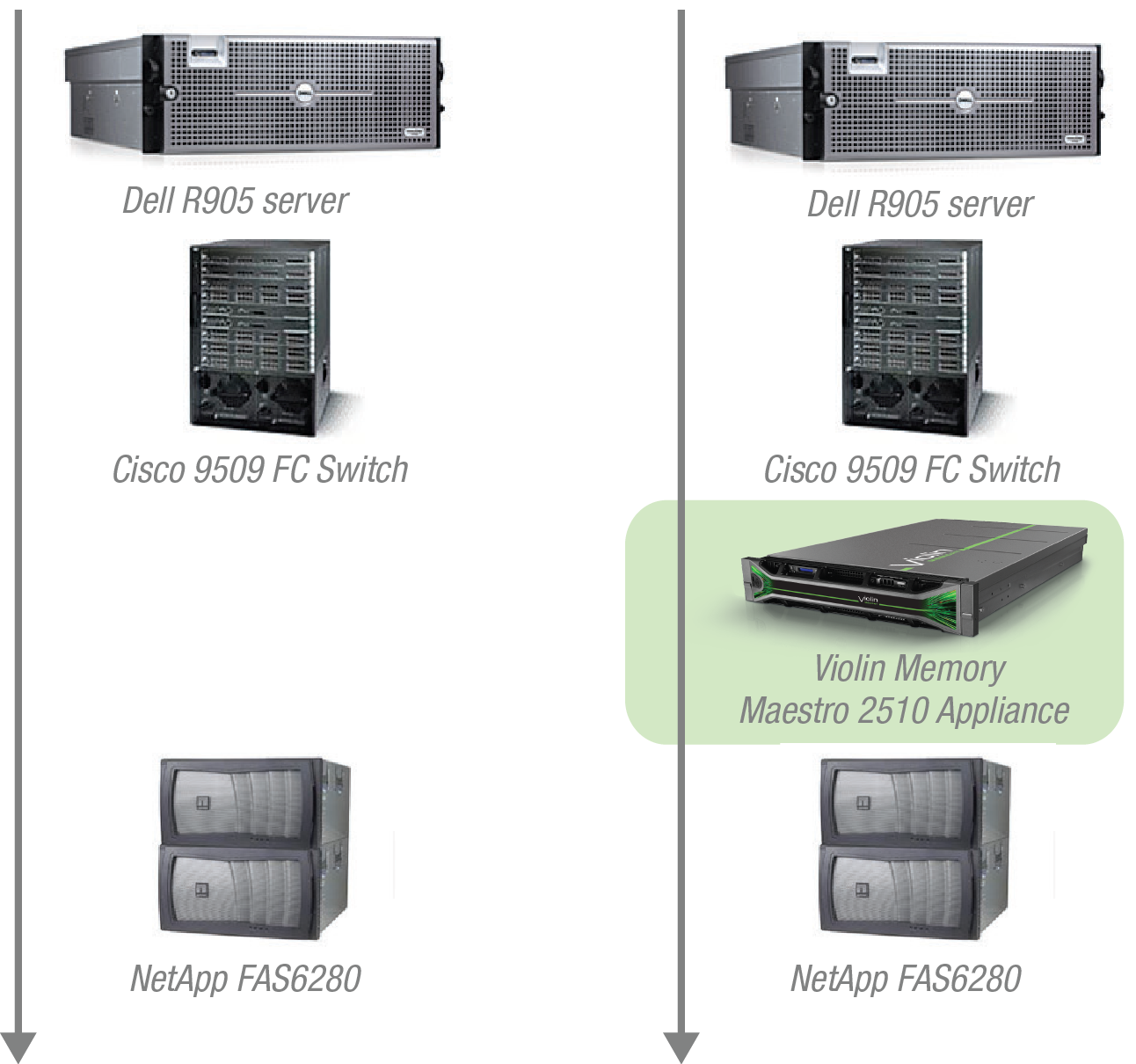The new life of the old storage system - the magic iron Violin to speed up arrays

If you have such storage systems as EMC Clariion, VNX, VMAX, Symmetrix DMX3, DMX4, AMS 2000, HUS and others, and you lack their performance, I have good news.
New fast storage may not be necessary. If you just need to speed up reading tasks, there is a solution that is much cheaper than upgrading the array and easier to implement than disks in Symmetix. Called Violin Maestro.
')
This is a hardware read cache that connects between the host and the storage system. The piece of iron has already been tested in Russia. It can be taken and put without any downtime and stops.
What and how
Actually, the principle is very simple. Violin Maestro is placed in the gap between the storage and the host and caches data. Data is sent from the caching device, and it works at speeds close to DRAM.
It is possible to accelerate both new arrays and old ones - to the cache, no matter what array to work with. The only thing is that the class of sequential reading tasks does not fall into the cache. Maestro is smart and does not touch a consistent load. The whole main butt of working with databases, virtual machines is accelerating just great.
The implementation is very simple, and done without downtime. At first, Maestro is put in bypass mode and simply scans traffic that runs past the device. He studies, analyzes data, looks at the use of each moon and considers the optimal cache mode for them. Then, after training (in practice - in a day), recommends the optimal mode for each volume. What is nice is that, among other things, it calculates the shift (when the blocks of the necessary data start from the middle of the storage system). All this can be configured through the GUI and through the console by hand.
Next, the device pulls hot data into the cache and itself responds to host read requests for it. If the data is not in the cache, the device simply sends this request to the storage system. The additional delay is only no more than 300 µs. The host does not see Maestro - for it is, roughly speaking, a “transparent client”, something like an extraordinary FC switch.
Despite the fact that Maestro accelerates only reading, during test implementations, we noticed another interesting fact. When part of the read load is removed from the storage system, resources are released that make writing faster. That is, if you count in the metrics of the speed of the butt that works with “hot” data, the entire system is accelerated.

Here is the array of Violin Maestro
Implementation
Here is an example of implementation in a pharmaceutical company, where about 4 thousand users worked in a system with VMware / NetApp (on the left it was, on the right it became):

The result is:
- I / O latency (average latency) decreased by 8 times.
- The number of IOPS increased 12 times.
- SAN channel utilization increased 4 times.
- Pharmacists saved $ 1.2 million compared to installing a new storage system, and later they got so involved that they saved another $ 775,000 when they realized that 3 times more users could be placed on the same hardware.
It is worth noting that Maestro is not a panacea for speeding up the storage system. Here are the main situations:
- If you have tasks for reading prevail - Maestro will help with a cache for hot data. In this case, the solution will cost 10 times cheaper than buying a faster storage for reading.
- If there are many tasks for writing, Maestro will free up some resources by processing read requests to the storage system, but it will not change the situation radically. As a rule, an array upgrade is required.
Basically, of course, Maestro is being introduced where a new budget does not allow to buy a new Hi-End storage system, and quick reading is necessary. Therefore, the usual practice - a good disk storage + Maestro, or a good old Hi-End + Maestro. Examples of integration include insurance, banks, universities, medicine, oil and gas, retail, telecoms, and so on. Everything where something is slowing down.
TTX for model 2510

Reliability
In data centers, a piece of iron can be considered reliable only when it does not present surprises for several years in a row. For hundreds of people, the fact that the device was “good old” is realized at the moment when it is time to take it out of the rack and write it off, because the lifespan of a conventional storage system is about 5 years.
Understandable concern about Maestro is due to the fact that this is another link in the chain between the host and the storage system. I say that I personally trust the piece of iron. First, of course, there is no single point of failure (this is the norm for the data center hardware), and secondly, in case of problems, there is a bypass that allows the host to simply work with the storage directly. Thirdly, the update and other service is done without downtime: for example, a new firmware is like a Martian lunar rover. First, the software gets one controller, reboots, if it is successfully commissioned, the second one starts to be updated. Fourthly, volumes can always be returned to the hosts, by giving directly to the storage system - the system does not make changes to the data on the storage system, which means they are safe.
About the bypass, by the way, must be said separately. It can be done selectively. We had an example, when 5 test bases and 5 bases of “combat” butt on production were accelerated. At the end of the month, a very resource-intensive task arose on the production, the administrators simply transferred the test bases to bypass mode, which made it possible to give more cache to the main system.
Interesting?
It was damn interesting for me to hold Maestro in my hands and see what a piece of iron can and what not. I must say, the final impression turned out to be even slightly better than I had assumed at the beginning when I heard the “smart cache”.
I do not propose to take my word. I suggest to take and try. This can be done at a conference in September, where new Violin solutions will be presented. You can also discuss test drives for your company.
The conference
If you work with IT infrastructure, then I invite you to a conference on new solutions for data centers. There will be guys from Violin (including engineers and tops), our engineers and data center specialists, as well as customer representatives from Ingosstrakh and Raiffeisenbank, who have already tried Violin hardware.
In a programme:
• A detailed story about Maestro (in detail, much more detailed and with more details than the above).
• Windows Flash Array storage supporting RDMA (ideal for Exchange, SQL server, Hyper-V).
• New virtualizer, which is very necessary if you have multiple storage systems. About him more already in place. For CIOs, the opportunity to cut infrastructure spending for the next year.
Come, we'll show everything. September 25, here is the link to the program of the event and registration. Well, me, traditionally, you can now ask about the Maestro and implementation by mail vbolotnov@croc.ru. Or in the comments. Just keep in mind that we have one test piece, and for the next two weeks at least, it is already under tests.
Source: https://habr.com/ru/post/236797/
All Articles